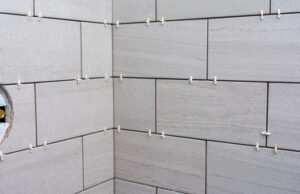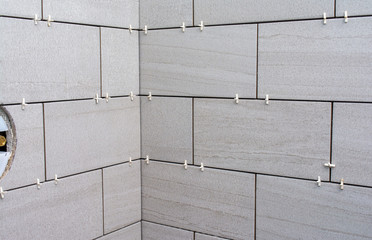Remodeling your bathroom is a great way to improve the look and functionality of your home. Bathroom Remodel Jacksonville FL also adds value to your house when it comes time to sell.
Before starting your project, do some research. Flip through magazines, visit showrooms, and ask for quotes from contractors. You want to make sure your budget is realistic.

The cost of a bathroom remodel is largely determined by its size and the amount of new materials it requires. A full renovation is typically more expensive than a cosmetic update, since it involves tearing down walls and ceilings and replacing them. The cost of installing a new toilet, bathtub, shower enclosure, and vanity also adds to the total bill.
Labor costs make up between 40% and 65% of the overall remodeling cost. Hiring a professional can save you money and ensure that the job is done correctly. However, DIY options can be costly if you’re not experienced in handling plumbing or electrical work.
Other major cost drivers include flooring, cabinetry, and lighting. Tile can be a beautiful choice for the floor but it’s pricier than other options like wood or vinyl. Choosing a low-maintenance material can help keep costs down, such as quartz or marble. A tub or shower liner can also be a good investment for longevity and style.
Removing and installing new drywall or waterproof backer board adds to the cost. This is particularly true if the space is being expanded or if you’re changing the layout of the room. It’s also important to consider if any structural changes will need to be made, such as moving a waste line or diverting a water pipe.
If your bathroom is in need of a serious facelift, it may be worth hiring a pro to do the heavy lifting for you. This will help you avoid costly mistakes that could derail your budget and cause delays in the project completion.
Even small improvements to the bathroom can add value to your home. If you plan on selling soon, consult a real estate agent to see what upgrades are most effective at increasing the home’s sale price.
Some cosmetic updates don’t require a permit, but more extensive renovations often do. A permit will cost between $200 and $600 depending on your location and requirements. In some cases, you’ll need a permit to move plumbing or electrical outlets, install new windows, and more.
Remodeling your bathroom can bring a touch of luxury into your home. You can add a relaxing tub, a spa-like shower, and top-notch amenities like heated floors. You can also create a soothing ambiance with the right lighting, textured walls, and upscale fixtures. There are many options available for your bathroom’s design, so you can choose what suits your taste and style.
Before starting the project, decide on your budget and what changes you want to make. Use a remodeling planner or software program to help you with the process. You can even get a professional designer to work with you to give you the best results. Keep in mind that this is an expensive option, and you will likely need to spend additional money on hiring a contractor.
If you are looking for a stylish design, consider using natural materials and earthy colors to create a modern boho vibe. Add artisanal accents, such as woven baskets, to complete your remodeling project. You can also use wide windows to let in more light, which will brighten the space and create a sense of openness.
A vaulted ceiling can give your room a sense of grandeur. You can install a full vaulted ceiling or opt for a slope, peak, slanted, or sunken section in one area of your bathroom. This ceiling design is an eye-catching addition to any bathroom.
You can change the look of your bathroom by adding recessed or built-in storage. These spaces are ideal for storage and can provide an attractive focal point in your bathroom. They can also create a sense of space in smaller bathrooms.
You should also replace any old electrical wiring that is not up to code. Older homes often have the bathroom on a 15-amp circuit, which can overload with high-powered appliances like hair dryers and flat irons. A remodeled bathroom should have its own dedicated 20-amp circuit with GFCI outlets.
You can add more lighting to your bathroom by installing recessed cans or pendant lights. You can even add a sconce or two for a more decorative effect. Choose a sleek fixture that reflects your style and match your hardware, such as a brushed brass faucet or handle.
A bathroom layout is one of the most important aspects of a successful remodel. It determines how the space is used, whether it’s practical for a family home or a spa-like retreat. It also influences what kind of fixtures and accessories you can install. Changing the location of a tub or toilet can be a huge undertaking, requiring wiring and plumbing changes. It’s best to get your plumber involved before starting any construction. Having a rough draft of your bathroom layout plan can help you avoid costly mistakes during the construction phase.
A tub can take up as much as a third of the floor space in a small bathroom, but there are ways to make your bath feel larger. For example, you can add a window to the room, or you can use wall-mounted or freestanding storage to keep everything from towels to soaps and shampoos off the floor. You can also opt to remove the bathtub altogether. This will create more floor space and make the room feel airier and brighter.
Another great way to save space in a small bathroom is to hang mirrors on the wall, instead of placing them on a cabinet. Using mirrors in the bathroom helps to make it feel bigger and lighter. It’s also a great way to add more lighting. Using light-colored paint, wallpaper and tile is another way to make your bathroom look bigger.
The layout of a bathroom is often dictated by the room’s structure and location in the house. For example, if your bathroom is connected to a bedroom, it’s important that the two rooms flow together seamlessly. If you’re remodeling an en suite bathroom, consider using the same colors in the bedroom to create a consistent style.
It’s a good idea to include a professional designer for your bathroom remodel. They will help you to determine the best layout for your home and provide a detailed design that meets your budget and goals. A designer will also assist you in finding the right materials, finishes, and fixtures for your bathroom. They can also help you create a realistic timeline for the project and provide cost estimates.
During bathroom remodeling, it’s important to consider your storage options. You’ll need to store all of the supplies you use for your bath, including towels and toiletries. You may also want to install a shelf or cabinet for extra storage space. Keeping your bathroom organized will help you stay clutter-free and make it easier to clean.
You can choose from a variety of materials for your bathroom remodel, including porcelain, marble and granite wall and shower tiles. Choosing the right tile for your bathroom can improve its appearance and durability. You can even opt for cement (painted or stained) or sheet vinyl for your floor, as long as it is durable and slip-resistant.
The cost of your bathroom remodel will depend on the size of the room, quality of materials and whether you’re hiring a professional or doing it yourself. While some people may be tempted to do the project themselves, it is usually best to hire a professional to ensure that the job is done correctly and in compliance with local codes.
If you are planning to do a major remodel of your bathroom, it’s important to have a clear idea of what you want to accomplish. It will help to define the scope of the project and ensure that all work is completed on time. It will also save you money in the long run by avoiding unnecessary expenses.
It’s also important to consider your motivation for the remodel. Some homeowners prefer to make a statement, while others may want a classic look that boosts resale value. You’ll also need to decide how much time you’re willing to spend on the project, and how much you’re willing to invest in it.
You should keep in mind that some upgrades require a permit, such as new floors or drywall. Other projects, like painting rooms or repairing plaster, don’t require a permit. However, you should always consult your local building department to be sure. Generally, you’ll need a permit for changes that impact plumbing lines. Otherwise, you may have to deal with a costly plumbing fix later on.
